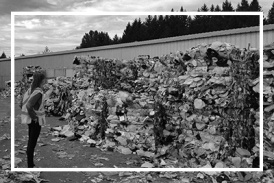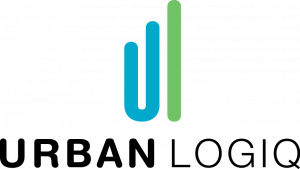UrbanLogiq Launches Global Model and Strategic Alliance Program to Understand Community Behaviour at Scale
UrbanLogiq’s Global Model & Alliance Program bring AI to public sector decisions, tackling the world’s most pressing challenges at scale.
The Global Foundation Model helps governments understand how communities behave and change over time. It creates a unified digital view of the natural and built environment—mapping how features like land, roads, and infrastructure relate to one another. By combining government and private sector data, and applying machine learning informed by subject matter experts, the model uncovers patterns and helps forecast future needs.
To strengthen and scale the model, UrbanLogiq also launched a Strategic Alliance Program where governments and global organizations are invited to contribute data, share expertise, and collaborate on new tools built on the model. In return, partners gain access to UrbanLogiq’s platform insights, co-development opportunities, and data products that support their own missions.
“Governments need tools that reflect the complexity of the communities they serve. This model was purpose-built for that—grounded in public data, informed by public-sector priorities, and strengthened through collaboration with global organizations that bring valuable expertise and perspective. It’s a collective effort to build stronger, safer, more sustainable communities.”
— Mark Masongsong, CEO of UrbanLogiq
The model creates a continuous feedback loop: as alliance partners contribute data, the insights become stronger. Governments benefit from more accurate forecasts and scenario planning. Alliance partners gain deeper community insights to better serve their clients.
UrbanLogiq’s goal is simple: help governments make better decisions with better data. The Global Foundation Model is the infrastructure that makes that possible—at scale.
Already, global organizations have joined our Strategic Alliance Program.
We are excited to announce that we have partnered with WSP Global Inc., who will be contributing their global expertise and knowledge to help shape early applications of the model in service of both our clients and theirs. Joint solution and product announcements to follow in the coming months.
“By combining our decades of experience working across municipal and regional land and transport planning with UrbanLogiq’s data analytics and modeling solutions, we are positioned to offer our joint clients even more ways to harness the power of data and AI to continue driving value-focused innovation.”
— Chadi Habib, Chief Technology Officer and Head of Business Solutions at WSP
We are also thrilled to welcome Cubic ITS to our Strategic Alliance—combining their transportation solutions expertise with UrbanLogiq’s AI-powered platform to help governments make faster, smarter decisions for safer, more connected communities. Product developments from this collaboration will be announced soon.
“At Cubic, we’re committed to shaping the future of mobility through innovation and collaboration. The strategic alliance with UrbanLogiq is a powerful step toward delivering integrated, data-driven solutions that help transportation agencies build more efficient and resilient systems.”
— Geoff Scalf, ITS Senior Product Director at Cubic Transportation Systems
To learn more visit https://urbanlogiq.com/global-foundation-model/
About UrbanLogiq: UrbanLogiq is committed to transforming how governments leverage data by breaking down silos to empower smarter, data-driven decision-making. UrbanLogiq’s AI-powered analytics platform seamlessly integrates diverse data sources across departments and domains, providing public officials with a comprehensive, unified view of their urban environments. With a focus on data security, UrbanLogiq ensures sensitive information remains protected while delivering actionable insights and advanced AI solutions. UrbanLogiq’s mission is to equip governments with the tools to make faster, cheaper, and more accurate decisions to drive meaningful impact and build stronger, safer, more sustainable communities.
Luisa Alvarez
UrbanLogiq
+1 604 7870207
email us here
Visit us on social media:
LinkedIn
Facebook
YouTube
X
Legal Disclaimer:
EIN Presswire provides this news content "as is" without warranty of any kind. We do not accept any responsibility or liability for the accuracy, content, images, videos, licenses, completeness, legality, or reliability of the information contained in this article. If you have any complaints or copyright issues related to this article, kindly contact the author above.
Mark Farias Releases New Album Gasoline Milkshake
Rental Supply Inc. Recognized Among Fastest-Growing Equipment Rental Companies in North America
Prept Bridges Boutique Style and Tech to Elevate & Personalize The Shopping Experience
Kalendarium
Więcej ważnych informacji
 Jedynka Newserii
Jedynka Newserii

 Jedynka Newserii
Jedynka Newserii

Handel

Ze względu na różnice w cenach surowce wtórne przegrywają z pierwotnymi. To powoduje problemy branży recyklingowej
Rozporządzenie PPWR stawia ambitne cele w zakresie wykorzystania recyklatów w poszczególnych rodzajach opakowań. To będzie oznaczało wzrost popytu na materiały wtórne pochodzące z recyklingu. Obecnie problemy branży recyklingu mogą spowodować, że popyt będzie zaspokajany głównie przez import. Dziś do dobrowolnego wykorzystania recyklatów nie zachęcają przede wszystkim ceny – surowiec pierwotny można kupić taniej niż ten z recyklingu.
Przemysł spożywczy
Rośnie presja konkurencyjna na unijne rolnictwo. Bez rekompensat sytuacja rolników może się pogarszać

Rolnictwo i żywność, w tym rybołówstwo, są sektorami strategicznymi dla UE. System rolno-spożywczy, oparty na jednolitym rynku europejskim, wytwarza ponad 900 mld euro wartości dodanej. Jego konkurencyjność stoi jednak przed wieloma wyzwaniami – to przede wszystkim eksport z Ukrainy i niedługo także z krajów Mercosur, a także presja związana z oczekiwaniami konsumentów i Zielonym Ładem. Bez rekompensat rolnikom może być trudno tym wyzwaniom sprostać.
Transport
Infrastruktury ładowania elektryków przybywa w szybkim tempie. Inwestorzy jednak napotykają szereg barier

Liczba punktów ładowania samochodów elektrycznych wynosi dziś ok. 10 tys., a tempo wzrostu wynosi ok. 50 proc. r/r. Dynamika ta przez wiele miesięcy była wyższa niż wyniki samego rynku samochodów elektrycznych, na które w poprzednim roku wpływało zawieszenie rządowych dopłat do zakupu elektryka. Pierwszy kwartał br. zamknął się 22-proc. wzrostem liczby rejestracji w ujęciu rocznym, ale kwiecień przyniósł już wyraźne odbicie – o 100 proc.
Partner serwisu
Szkolenia

Akademia Newserii
Akademia Newserii to projekt, w ramach którego najlepsi polscy dziennikarze biznesowi, giełdowi oraz lifestylowi, a także szkoleniowcy z wieloletnim doświadczeniem dzielą się swoją wiedzą nt. pracy z mediami.









.gif)

 |
| |
| |
|